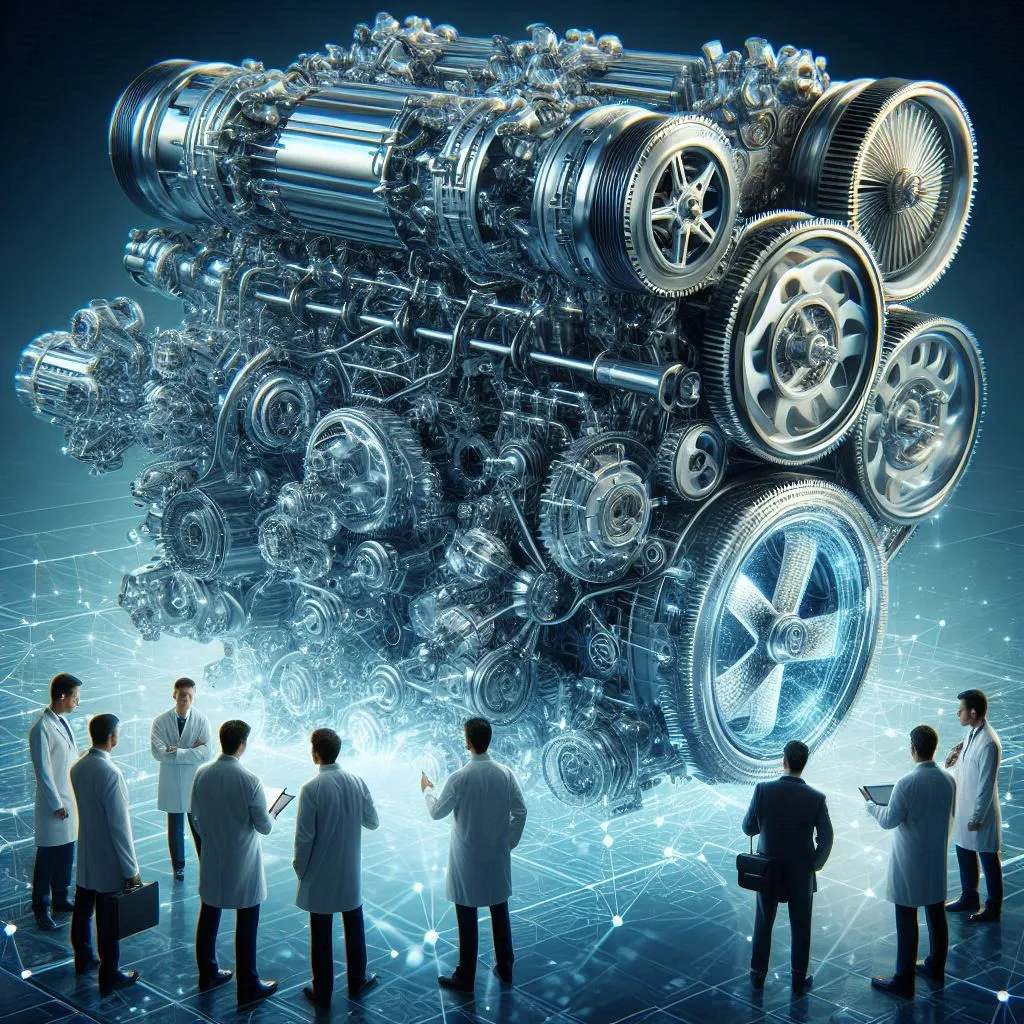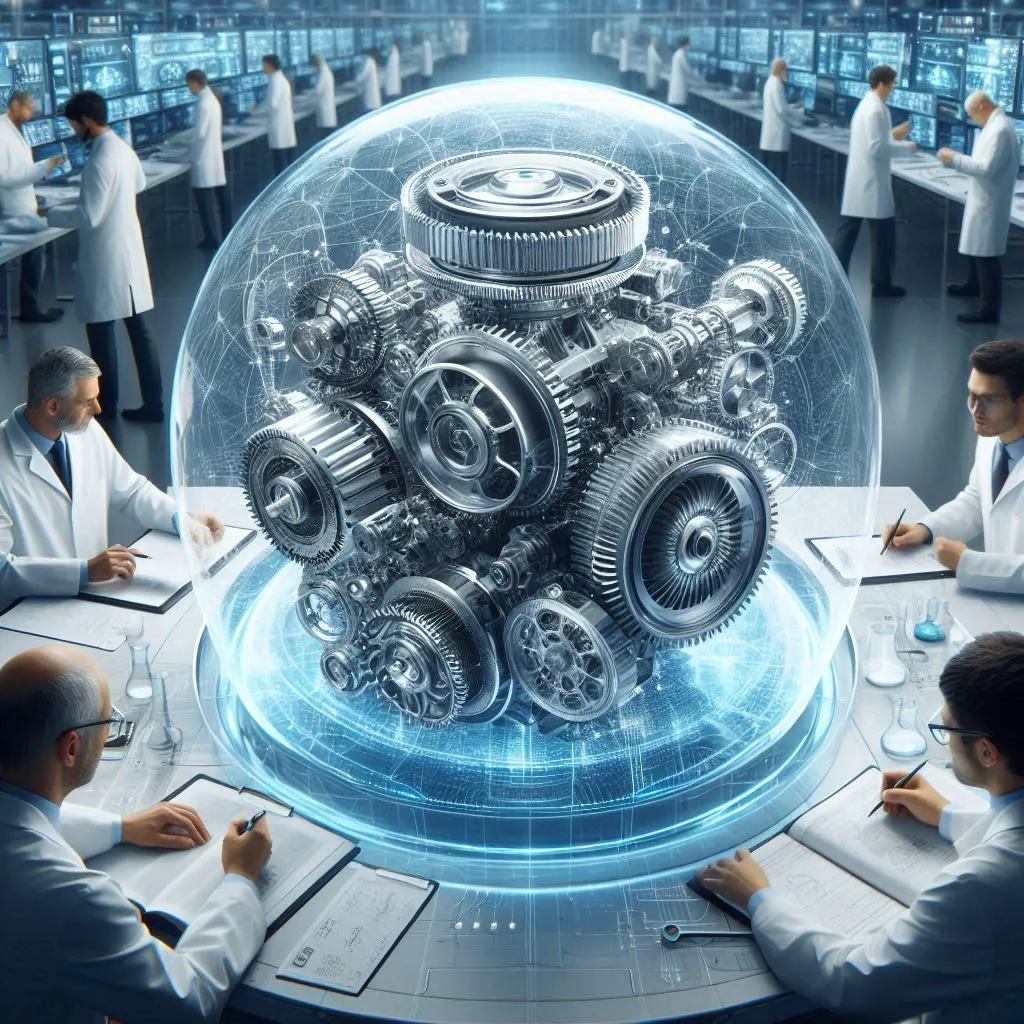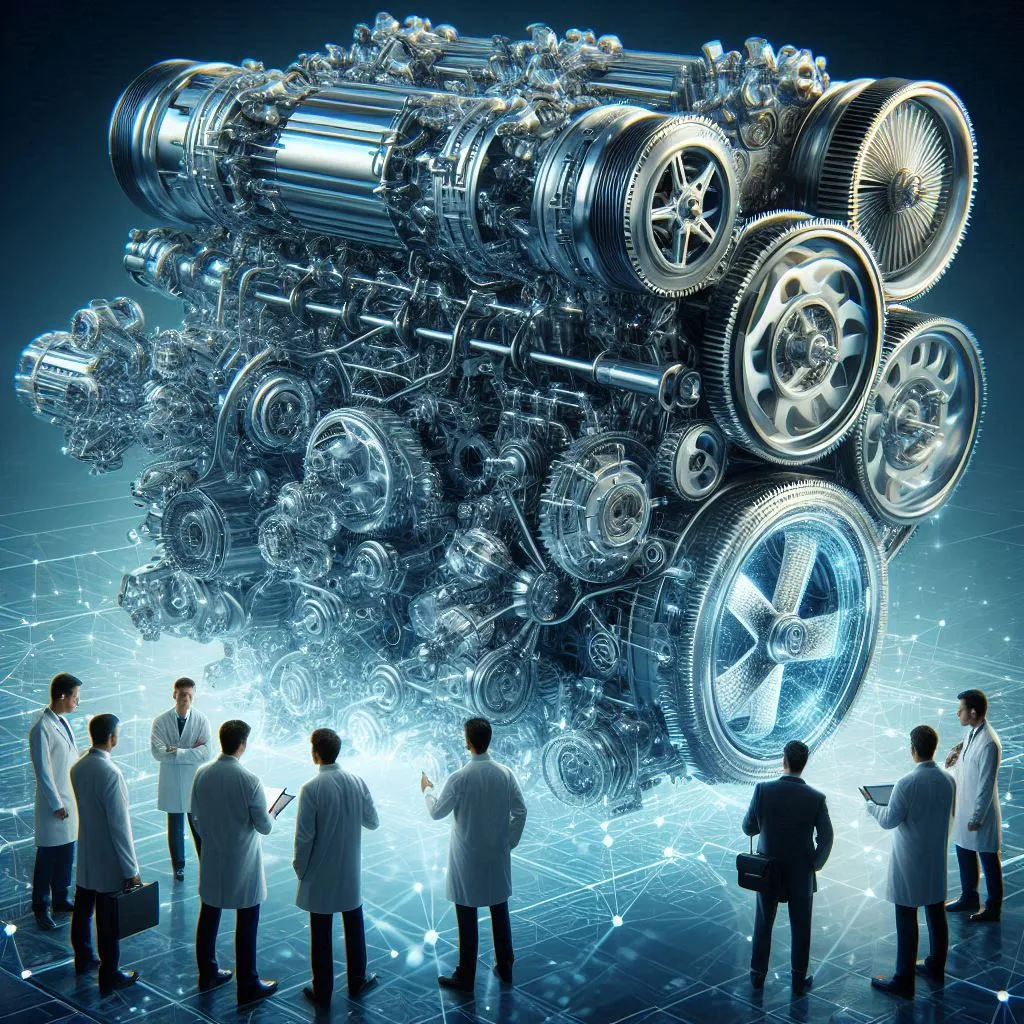
As we move further into 2024, the automotive industry Engines in Production continues to witness significant advancements in engine technology. These innovations are driven by various factors, including the need for enhanced fuel efficiency, improved performance, and stricter emissions regulations. Modern engines are now the product of cutting-edge materials and design techniques that greatly influence their overall functionality and environmental impact.

Introduction to Engine Technology Advancements
One of the key trends in engine development is the utilization of lightweight materials such as carbon fiber and advanced alloys. These materials not only reduce vehicle weight but also enhance performance and fuel economy. Moreover, innovative design methodologies, such as computer-aided design and simulation, have precisely optimized these engines for maximum efficiency without compromising power outputs. Therefore, manufacturers are now able to produce engines that deliver high performance while adhering to environmental standards.
Furthermore, advancements in turbocharging technology have allowed smaller engines to produce power equivalent to traditional larger engines. This downsizing trend contributes to better fuel efficiency and lower emissions, which is critical in achieving compliance with increasingly stringent emissions regulations. Hybrid and electric technologies have also transformed the landscape, compelling manufacturers to explore alternative energy sources that support sustainability goals.
The competitive automotive market of 2024 is not solely focused on raw power but emphasizes a holistic approach that balances performance, efficiency, and environmental stewardship. Engine manufacturers are investing significantly in research and innovation, leading to breakthrough solutions that cater to evolving consumer preferences and global regulatory pressures. As we explore the most impressive engines in production this year, it is essential to appreciate the profound influence of these technological advancements and their role in shaping the future of automotive engineering.
Top Gasoline Engines of 2024
As the automotive industry continues to evolve, the demand for powerful yet efficient gasoline engines is more pronounced than ever. In 2024, several notable manufacturers have unveiled advanced gasoline engines that not only emphasize performance but also promote environmental responsibility. These engines showcase groundbreaking technologies and engineering excellence, making them standouts in the current market.
One of the most impressive engines this year is found in the Ford Mustang, featuring a turbocharged 2.3-liter EcoBoost four-cylinder engine. This unit generates approximately 310 horsepower, ensuring exhilarating acceleration while maintaining commendable fuel efficiency. A distinctive characteristic of this engine is its adaptive tuning capability, which optimizes performance based on driving conditions, ensuring a tailored driving experience.
Another significant contender is the Chevrolet Corvette’s 6.2-liter V8 engine, which delivers an astonishing 495 horsepower. This engine is noted for its lightweight construction and advanced airflow dynamics, allowing for rapid throttle response and a thrilling driving experience. Pairing this engine with a dual-clutch transmission further enhances its performance, providing quick shifts and superior handling. The Chevrolet Performance team has integrated direct fuel injection, resultant in improved combustion, reduced emissions, and enhanced overall efficiency.
Honda has also made strides in this segment with its 2.0-liter turbocharged inline-four engine used in models like the Honda Civic Type R. Delivering about 320 horsepower, this engine is designed to provide a thrilling yet controlled driving experience. It incorporates a highly responsive turbocharger and a well-calibrated suspension system that amplifies the sporty character of the vehicle while ensuring driver comfort during everyday use.
In summary, the gasoline engines making headlines in 2024 reflect a remarkable blend of performance, innovation, and efficiency. Each model mentioned represents a commitment by manufacturers to enhance the driving experience while adapting to the evolving expectations of consumers. As these advancements continue to unfold, the future of gasoline engines looks increasingly promising.

Diesel Replacement Engines in 2024
As the automotive industry evolves, diesel engines continue to showcase their capabilities, particularly in 2024. This year, several standout diesel engines demonstrate remarkable torque and efficiency ratings while adhering to the latest emissions standards. These advancements highlight the ongoing innovation in diesel technology, attracting interest across various sectors, including commercial vehicles and heavy machinery.
One notable example is the Cummins X15 diesel engine. With a torque rating that can reach an impressive 1,850 lb.-ft, the X15 has been engineered to optimize fuel efficiency and lower emissions. This engine is designed for use in heavy-duty trucks, offering a combination of power and reliability that makes it suitable for long-haul transportation. Cummins has also implemented advanced fuel management systems to ensure that emissions remain compliant with stringent regulations, all while maximizing performance.
Another significant entrant in 2024 is the Detroit DD16 engine, which showcases diesel’s potential in commercial applications. With a torque output of up to 2,000 lb-ft, the DD16 provides substantial pulling power for vocational trucks. Its design emphasizes efficiency, achieving up to 10% improved fuel economy compared to its predecessors. To address environmental concerns, Detroit has integrated advanced emission control technologies, ensuring compliance with the latest emissions standards without compromising performance.
Aside from the trucking industry, diesel engines play a crucial role in construction and agriculture. For instance, the John Deere 9L engine exemplifies innovation in agricultural machinery, with its ability to deliver robust performance and exceptional fuel efficiency. With advancements in diesel engine technology, these units are not only more efficient but also align with the industry’s shift towards sustainability.
Overall, the remarkable diesel engines of 2024 not only deliver substantial torque and efficiency but also exemplify compliance with environmental regulations. As industries increasingly seek power and sustainability, diesel continues to adapt and meet evolving demands.
The Rise of Hybrid Engines

As we advance into 2024, the automotive industry is witnessing a significant surge in the adoption of hybrid engines. These innovative powertrains, which synergize an internal combustion engine with electric propulsion systems, have gained prominence as they offer a compelling balance between performance and fuel efficiency. This architectural combination enables vehicles to harness the strengths of both power sources, thereby optimizing energy usage and minimizing emissions.
The hybrid engine architecture typically involves a traditional gasoline or diesel engine working in tandem with an electric motor, powered by a battery. This dual system allows for various operating modes, including electric-only driving, gasoline-only driving, or a combination of both. The result is a smoother driving experience, improved responsiveness, and an enhanced overall efficiency, making hybrids an attractive option for both city commuting and longer road trips.
In 2024, several leading automotive manufacturers have unveiled impressive hybrid models that showcase this technology’s capabilities. Notable examples include the Toyota Prius, which continues to set benchmarks for fuel economy, and the Honda Accord Hybrid, renowned for its sporty performance while maintaining efficiency. Additionally, luxury brands like Mercedes-Benz and BMW have introduced hybrid variants that exemplify both opulence and environmental responsibility, catering to consumers who seek sustainability without sacrificing comfort.
The rise of hybrid engines also plays a crucial role in the global endeavors to reduce carbon footprints. By utilizing a combination of electric and traditional fuel sources, hybrid technology significantly lowers greenhouse gas emissions compared to conventional vehicles. This has become increasingly important as countries implement stricter emissions regulations and work towards achieving sustainability goals. The continued development and enhancement of hybrid systems are expected to drive the automotive sector towards a greener future, bridging the gap between traditional combustion engines and fully electric vehicles.
Cutting-Edge Electric Motors
The evolution of electric motors has accelerated significantly in 2024, marking a pivotal shift in the automotive industry as these systems increasingly replace traditional internal combustion engines. Electric motors are now recognized not only for their sustainability but also for their impressive performance capabilities, providing an alternative that many manufacturers are keen to adopt. With advancements in electric drivetrains, these motors deliver exceptional power and torque, transforming the driving experience through instantaneous acceleration and smooth operation.
One of the most notable aspects of electric motors is their efficiency compared to conventional engines. While traditional engines convert only a fraction of fuel energy into motion, electric motors boast an efficiency rate of around 90%, minimizing energy waste. This innovation has led to a growing number of electric vehicles (EVs) achieving remarkable performance figures, with some models able to accelerate from 0 to 60 mph in under three seconds, rivaling high-performance sports cars. In this landscape, the integration of advanced electric drivetrains has created a competitive and dynamic market.
In 2024, breakthroughs in battery technology play a crucial role in enhancing the viability of electric motors. Manufacturers are investing in solid-state batteries, which promise greater energy density, reduced charging times, and increased longevity compared to their lithium-ion counterparts. These advancements address one of the primary concerns of potential EV buyers—range anxiety. Additionally, rapid-charging systems are becoming more widespread, allowing consumers to recharge their vehicles quickly and conveniently, echoing the traditional refueling experience.
The rise of electrification signifies a remarkable transition in the automotive sector, as car manufacturers embrace cutting-edge electric motors to meet the growing demand for performance, efficiency, and sustainability. As we move further into 2024, it is evident that these electric drivetrains and their underpinning technologies are not merely alternatives but the forefront of automotive engineering.

Innovative Engine Technologies in Racing
Racing has always been at the forefront of technological advancements in the automotive industry, showcasing remarkable engine technologies that push the boundaries of performance. Several high-performance engines used in motorsports have significantly influenced the design and functionality of production models in 2024. These engines are characterized by their ability to deliver remarkable power output while maintaining efficiency, reliability, and precision engineering.
One of the most prominent innovations in racing engine technology is the adoption of hybrid powertrains. These engines combine traditional internal combustion engines with electric motors, allowing for unprecedented power delivery and efficiency. For example, Formula 1 vehicles utilize highly sophisticated hybrid systems that can instantly provide a power boost, while also recovering energy during braking. This technology not only enhances racing performance but is also trickling down to consumer vehicles, as automakers strive to create more efficient and powerful road cars.
Additionally, advancements in turbocharging and supercharging have vastly improved the performance of racing engines. These forced induction systems allow for increased air intake, resulting in improved combustion and power generation. Leading racing series have implemented stringent regulations that promote the use of smaller engines paired with turbochargers, demonstrating that size does not always equate to output. The lessons learned from these racing innovations are increasingly being seen in production vehicles, as manufacturers develop smaller yet power-dense engines for everyday driving, thus enhancing fuel efficiency and reducing emissions.
Moreover, the use of lightweight materials, such as carbon fiber and advanced metals, in engine construction contributes to significant weight reductions, enabling vehicles to achieve higher speeds and improved handling. This trend in racing not only benefits performance cars but has also led to the production of lighter, more agile models for the consumer market. As a result, the racing world continues to be a crucial source of inspiration for developing cutting-edge engine technologies that define the next generation of vehicles.

Alternative Fuels and Their Engine Compatibility
As the automotive industry continues to evolve, the focus on sustainability has led to an increasing interest in alternative fuels such as biofuels, hydrogen, and natural gas. These fuels offer a viable pathway to reducing greenhouse gas emissions and reliance on fossil fuels. However, their integration into engine design necessitates significant modifications to ensure optimal performance and efficiency.
Engines operating on biofuels, derived from renewable biological resources, are engineered to maintain compatibility with existing diesel and gasoline engines. Many manufacturers have embraced biodiesel, which can be blended with traditional diesel fuel without extensive alterations. These engines benefit from the cleaner combustion properties of biodiesel, resulting in reduced emissions of particulates and other harmful pollutants. In 2024, several notable production models feature biofuel compatibility, showcasing an effective adaptation of engine design to incorporate these renewable resources.
The use of hydrogen as an alternative fuel has gained traction in recent years, particularly through hydrogen fuel cell technology. Unlike traditional combustion engines, hydrogen fuel cells generate electricity through a chemical reaction between hydrogen and oxygen, emitting only water vapor as a byproduct. The design of these engines focuses on lightweight materials and advanced cooling systems to maintain efficiency. In 2024, several manufacturers are releasing hydrogen-powered vehicles, exemplifying the industry’s commitment to sustainable energy solutions.
Natural gas, another alternative fuel, is primarily utilized in compressed natural gas (CNG) vehicles. These engines are adapted to accommodate the unique properties of natural gas, which requires different fuel delivery systems and modifications to ignition timing and pressure. The environmental benefits of using natural gas include lower carbon emissions compared to gasoline and diesel engines. Several production models in 2024 highlight the growing acceptance of natural gas as an alternative fuel, showcasing its potential for reducing environmental impact while maintaining performance standards.
Sustainable Engine Designs and Practices
The automotive industry has undergone a significant transformation in recent years, with a pronounced shift towards sustainability in engine design and manufacturing practices. This transition is not merely a trend; it is a necessity driven by the urgent need to address environmental concerns and the depletion of natural resources. Leading manufacturers are increasingly focusing on sustainable practices to reduce their carbon footprint while delivering high-performance engines.
One of the primary strategies being implemented is the use of recycled materials in engine production. Many companies are now sourcing components made from recycled metals and plastics, which not only conserves resources but also minimizes waste. The integration of these environmentally friendly materials ensures that the manufacturing process is less impactful on the planet. For example, some engine components are now being produced using recycled aluminum, which significantly reduces energy consumption compared to traditional methods.
In addition to utilizing recycled materials, manufacturers are adopting eco-friendly manufacturing processes. These processes often include advanced techniques that reduce emissions, energy use, and water consumption. Technologies such as additive manufacturing, or 3D printing, are being leveraged to create engine parts with reduced material waste and enhanced precision. Moreover, manufacturers are implementing energy-efficient practices within their factories, contributing to the overall sustainability of engine production.
A crucial aspect of sustainable engine design is the focus on longevity and reparability. Manufacturers are shifting their attention to creating engines that are not only durable but also easier to repair. By designing engines with modular components, repair and replacement become more straightforward, encouraging end-users to maintain their vehicles rather than dispose of them prematurely. This approach ultimately leads to a reduction in overall waste and promotes a circular economy in the automotive sector, aligning with broader sustainability goals.
As the industry accelerates towards a more sustainable future, the emphasis on environmentally conscious engine designs and practices will continue to evolve. By prioritizing sustainability, manufacturers are taking a crucial step towards environmentally friendly mobility solutions.

Conclusion and Future Trends in Engine Development
As we have explored throughout this blog post, the engine landscape for 2024 showcases remarkable advancements that highlight the ongoing evolution in automotive technology. The impressive engines currently in production reflect significant strides in performance, efficiency, and environmental standards. Innovations such as hybrid systems and turbocharging stand at the forefront, addressing both consumer demands and stringent regulatory frameworks.
Looking ahead, the future of engine development is poised for transformative changes, influenced by various factors. One key trend is the increasing emphasis on electrification. As manufacturers face growing pressure to produce more sustainable vehicles, the integration of electric powertrains and alternative fuel sources will likely gain traction. This shift not only aims to reduce emissions but also targets improvements in performance and fuel efficiency, leading to a new era of engine design.
Moreover, advancements in materials science are expected to play a critical role in engine development. The introduction of lightweight materials and improved manufacturing processes can enhance engine performance while minimizing weight, contributing to overall vehicle efficiency. Additionally, the potential adoption of advanced technologies, such as artificial intelligence and machine learning, can enable more sophisticated engine management systems, effectively optimizing performance based on real-time data.
Regulatory changes will also influence the trajectory of engine development. Governments worldwide are implementing stricter emissions standards, compelling automakers to innovate rapidly. This environment will drive the exploration of cleaner combustion technologies and alternative energy sources, ultimately reshaping the future market landscape.
In conclusion, the impressive engines highlighted in this article are merely steppingstones towards a future where continued innovation, regulatory adherence, and changing consumer preferences will define the next generation of powertrains. As the automotive industry evolves, the focus on sustainability and performance will shape engine development well beyond 2024.
Leave a Reply